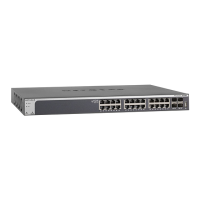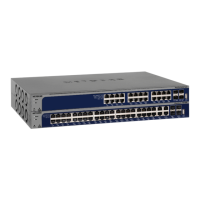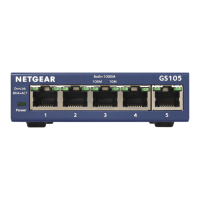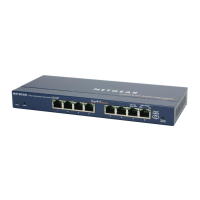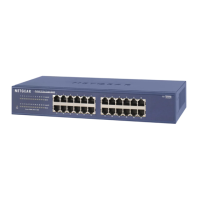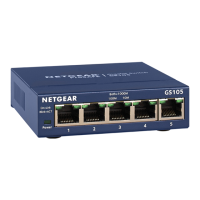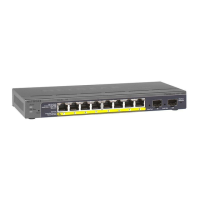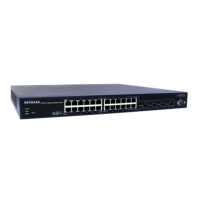System
20
XS728T ProSAFE 28-Port 10-Gigabit L2+ Smart Switch
When in-band connectivity is established, IPv6 information can be changed using any of the
following:
• SNMP-based management
• Web-based management
The IPv6 network interface uses the same VLAN as the IPv4 network interface.
To configure the global settings for an IPv6 Interface:
1. Select System > Management > IPv6 Network Configuration.
2. In the Global Configuration section, configure the following:
• Admin Mode. Enable or disable the IPv6 network interface on the switch. The default
value is Enable.
• IPv6 Address Auto Configuration Mode. The IPv6 address for the IPv6 network
interface is automatically configured if this option is enabled. The default value is
Disable.
• IPv6 Gateway. Specify the gateway for the IPv6 network interface. The gateway
address is in IPv6 global or link-local address format.
3. Click Apply to apply the changes to the system.
To add or modify IPv6 addresses on the network interface:
1. Select System > Management > IPv6 Network Configuration.
2. in the IPv6 Network Interface Configuration section, configure the following:
• IPv6 Prefix/Prefix Length. Select an existing IPv6 prefix and prefix length from the
list, or add a new IPv6 prefix and prefix length to the list of IPv6 addresses. The
address is in the global address format.
• EUI64. Specify whether the IPv6 address is in EUI-64 format. The default value is
False.
3. Click Add to add a new IPv6 address, or click Delete to delete a selected IPv6 address
from the list of IPv6 addresses.
4. Click Apply to apply the changes to the system.
IPv6 Network Neighbors
To view the IPv6 Network Interface Neighbors:
Select System > Management > IPv6 Network Neighbors.
Properties of each neighbor are displayed, as described below:
• IPv6 Address. Specifies the IPv6 address of the neighbor interface.
• MAC Address. Specifies the MAC address associated with the neighbor interface.
• IsRtr. Indicates whether the neighbor is a router. If the neighbor is a router, the value is
True. If the neighbor is not a router, the value is False.
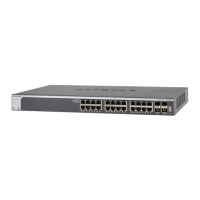
